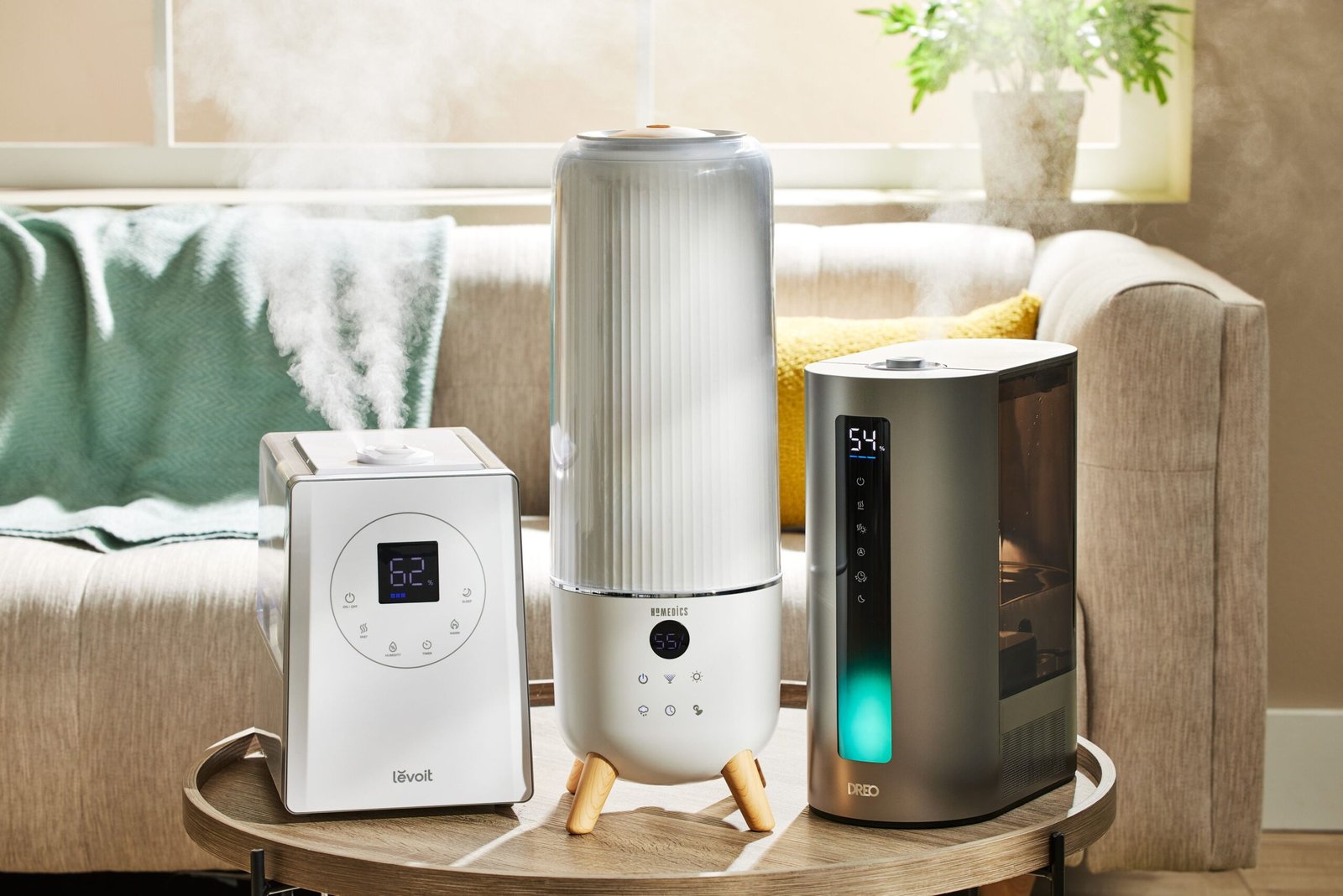The Ultimate Guide to Humidifiers: Enhancing Comfort and Health at Home

As the seasons change and indoor heating systems kick in, many people find themselves battling dry air. Humidifiers can be an excellent solution, providing relief from dryness while improving overall comfort and health. This guide will explore the benefits of humidifiers, the different types available, and tips for choosing and maintaining one for your home.
Why Use a Humidifier?
1. Relief from Dry Air
Dry air can lead to various discomforts, including dry skin, irritated sinuses, and chapped lips. Humidifiers add moisture to the air, alleviating these issues and promoting overall comfort in your living space.
2. Improved Respiratory Health
Using a humidifier can help ease symptoms of respiratory conditions such as asthma and allergies. Moist air helps keep airways clear and can reduce nasal congestion, making it easier to breathe.
3. Better Sleep Quality
A humidifier can contribute to a more restful night’s sleep by keeping airways moist. This can reduce snoring and alleviate symptoms associated with sleep apnea, making for a more peaceful sleep environment.
4. Protection for Furniture and Plants
Dry air can damage wooden furniture, causing it to crack or warp. Additionally, many houseplants thrive in humid conditions. Using a humidifier can help maintain the integrity of your home’s furnishings and create a healthier environment for your plants.
Types of Humidifiers
1. Evaporative Humidifiers
Evaporative humidifiers use a fan to blow air through a wet wick or filter. As the air passes through, it picks up moisture and releases it into the room. This type of humidifier is self-regulating; as humidity levels rise, the evaporation rate decreases, preventing over-humidification.
Pros:
- Self-regulating feature
- Generally more affordable
- Minimal risk of mold or bacteria growth
Cons:
- Requires regular maintenance and filter changes
- May not be suitable for very large rooms
2. Ultrasonic Humidifiers
Ultrasonic humidifiers use high-frequency vibrations to create a fine mist of water droplets, which are then released into the air. These models are quiet and energy-efficient, making them a popular choice for bedrooms and nurseries.
Pros:
- Quiet operation
- Energy-efficient
- Available in cool and warm mist options
Cons:
- May require regular cleaning to prevent mineral buildup
- Some models may not have a filter, which can lead to bacteria growth
3. Steam Vaporizers
Steam vaporizers heat water to create steam, which is then cooled slightly before being released into the air. They are effective for killing bacteria and germs but can be less energy-efficient and may pose a burn risk.
Pros:
- Kills germs and bacteria
- Effective for larger spaces
Cons:
- Can be hot to the touch
- Uses more energy than other types
4. Impeller Humidifiers
Impeller humidifiers use a rotating disk to fling water into a diffuser, creating cool mist. They are quieter than steam vaporizers but may not be as effective in larger spaces.
Pros:
- Quieter operation
- Produces cool mist
Cons:
- Less effective for larger areas
- Requires regular cleaning
Features to Look For
When selecting a humidifier, consider the following features:
1. Tank Size
Choose a humidifier with an appropriate tank size for your room. Larger tanks require less frequent refilling, making them more convenient for continuous use.
2. Humidistat
A built-in humidistat allows the humidifier to automatically adjust its output based on current humidity levels. This feature helps maintain optimal humidity without over-humidifying the space.
3. Ease of Cleaning
Regular cleaning is crucial for preventing mold and bacteria growth. Look for models with easy-to-remove parts and those that can be cleaned with minimal effort.
4. Noise Level
If you plan to use the humidifier in a bedroom or nursery, consider the noise level. Ultrasonic and evaporative models are generally quieter than steam vaporizers.
5. Portability
If you plan to move the humidifier between rooms, consider its weight and design. Some models come with wheels or handles for easy transport.
Tips for Using and Maintaining Your Humidifier
1. Clean Regularly
Follow the manufacturer’s instructions for cleaning and maintaining your humidifier. Regular cleaning helps prevent mineral buildup and keeps the unit functioning properly.
2. Use Distilled Water
Using distilled or demineralized water can reduce the buildup of minerals and make cleaning easier. This also helps prevent white dust from settling on surfaces.
3. Monitor Humidity Levels
Aim to maintain indoor humidity levels between 30-50%. Use a hygrometer to monitor the humidity in your home and adjust the humidifier settings accordingly.
4. Change Filters as Needed
If your humidifier uses filters, be sure to replace them according to the manufacturer’s recommendations to ensure optimal performance.
Conclusion
Humidifiers can greatly enhance your indoor environment by improving comfort, health, and air quality. With various types available, including evaporative, ultrasonic, steam vaporizers, and impeller models, you can find the right humidifier for your needs. By considering essential features and following proper maintenance practices, you’ll create a more comfortable and healthy living space for you and your family. Happy breathing!



